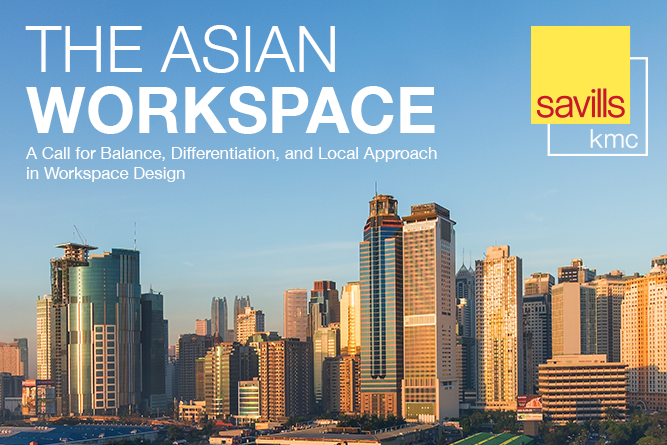
Reading Time: minutes
One size does not fit all. As technology and industries move into the future, the way companies and employees work across the globe is also quickly changing, calling for a more customized approach in workspace design and environment.
Recent research from Gensler, a leading architecture and design consulting firm based in San Francisco, CA, shows that Asian companies need to design their workspaces differently, and to veer away from solely sticking to the popular Western design formula: open plan workspaces combining workstations, offices, and conference rooms.
More room for flexibility and versatile organizations
Similar to their Western counterparts, Asian office workers also clamour for "a better balance of space for focused and collaborative work in line with work style and job requirements" in terms of the function of the workspace design.
However, this does not immediately equate to the Western approach of simply creating a collaborative work environment. According to Gensler, the needs of Asian employees go beyond collaborative work -- it is about having new workplace models that are more customized to their culture and needs.
"To give the Asian workforce, and workplace, its due, the imperative is clear-move beyond workplace models adopted from the West, and find the right balance of workspace, activities, styles, and cultures to poise Asian companies for competitiveness in the future," stated the report.
Along with a more balanced and customized office workspace, Asian employees are also calling for more versatile organizations that empower employees to experiment on how they perform their job. This includes "flexibility in day-to-day job scope, and a lack of hierarchy in how workspaces are assigned," which includes adding mobility.
"Employees in balanced workplaces spend an average of 20 percent less time in their primary workplace or office location, consistent across countries and industries." wrote Gensler in the brief.
The firm recommends providing the capability and infrastructure to allow employees to work outside the office, especially for businesses located in Asia's urban centers, in order for their people to shorten the travel time and increase their productive working time.
"Organizations should encourage employees to work from alternative settings, experimenting with not just the how but also the where of their work, while at the same time being sensitive to local culture and expectations."
Balance in workspaces in the Philippines
"At the end of the day, if it makes the team more productive and happier at work, business owners would willingly invest in redesigning their office space to cater and relate to the workplace culture and provide a more flexible work set-up," says Michael McCullough, KMC Savills Managing Director.
McCullough believes that the employees' desire for a balanced and flexible workspace is valid, and that employers would be happy to make changes to current work setups -- if possible. However, this flexibility cannot be easily applied in all businesses.
"Telecommuting is an emerging trend here in the Philippines, which is only natural because a lot of Filipinos are suffering from the traffic crisis and they want to spend less time commuting to work. However, given the country's expensive communications services and lack of connectivity in several areas, it would be difficult for all businesses to provide this level of work flexibility."
McCullough says that an alternative landlords and business owners can provide are added amenities and wellness services. They may also look into easing the other factors that affect employee productivity.
"Providing gyms, sleeping areas, game rooms and other wellness services may help to make employees happier at work. In terms of mobility, businesses can perhaps provide added benefits to ease commute and accessibility to and from the office, such as a company shuttle or assistance with employees' living arrangements. These factors might be the key to creating the desired balance in the workplace."
Choosing central locations close to major transport hubs might also be one way to improve balance in the workplace, says Dane de Vera-Wong, KMC Savills Senior Account Manager.
According to De Vera-Wong, Gensler's research hits close to home -- a major pain point in the growing BPO industry is the country's weak infrastructure and increasing traffic situation.
"Employers are also sensitive to what their employees need and this is why they are finding ways to provide a more balanced workspace and environment. We are starting to see business owners who are interested in looking for alternative office spaces that are not typically in the major CBDs,"
She adds that this is why there is a huge potential in locating in buildings near major thoroughfares and train stations, such as Jackman Plaza along EDSA-Munoz LRT station in Quezon City.
"With the current traffic situation in Metro Manila, employees would want to work in offices that offer a stress-free commute. By being centrally located and accessible via public transportation, we are certain that locating in these areas will make it easier to find and retain talent."

